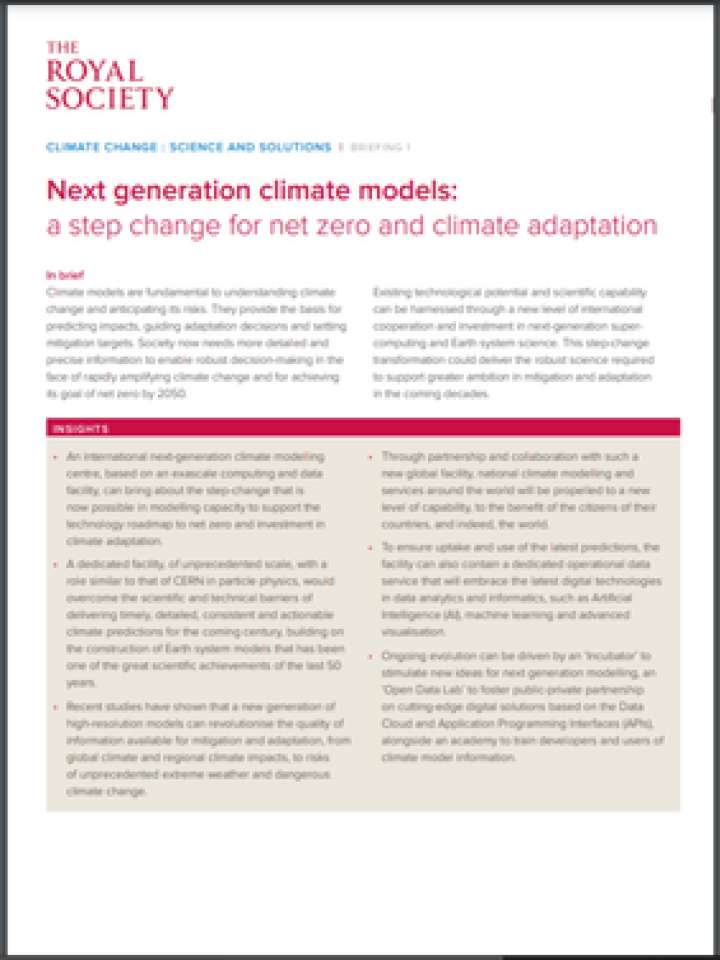Next generation climate models: a step change for net zero and climate adaptation
This briefing provides an overview of the future of climate models. Climate models are fundamental to understanding climate change and anticipating its risks. They provide the basis for predicting impacts, guiding adaptation decisions and setting mitigation targets. Society now needs more detailed and precise information to enable robust decision-making in the face of rapidly amplifying climate change and for achieving its goal of net zero by 2050. Existing technological potential and scientific capability can be harnessed through a new level of international cooperation and investment in next-generation supercomputing and Earth system science. This step-change transformation could deliver the robust science required to support greater ambition in mitigation and adaptation in the coming decades.
Some key insights provided in this briefing include:
- A dedicated facility, of unprecedented scale, with a role similar to that of CERN in particle physics, would overcome the scientific and technical barriers of delivering timely, detailed, consistent and actionable climate predictions for the coming century, building on the construction of Earth system models that has been one of the great scientific achievements of the last 50 years.
- Through partnership and collaboration with such a new global facility, national climate modelling and services around the world will be propelled to a new level of capability, to the benefit of the citizens of their countries, and indeed, the world.
- To ensure uptake and use of the latest predictions, the facility can also contain a dedicated operational data service that will embrace the latest digital technologies in data analytics and informatics, such as Artificial Intelligence (AI), machine learning and advanced visualisation.
Explore further
